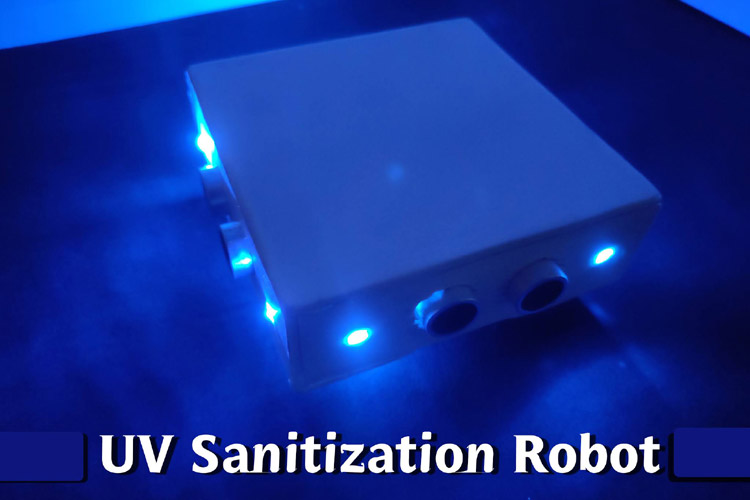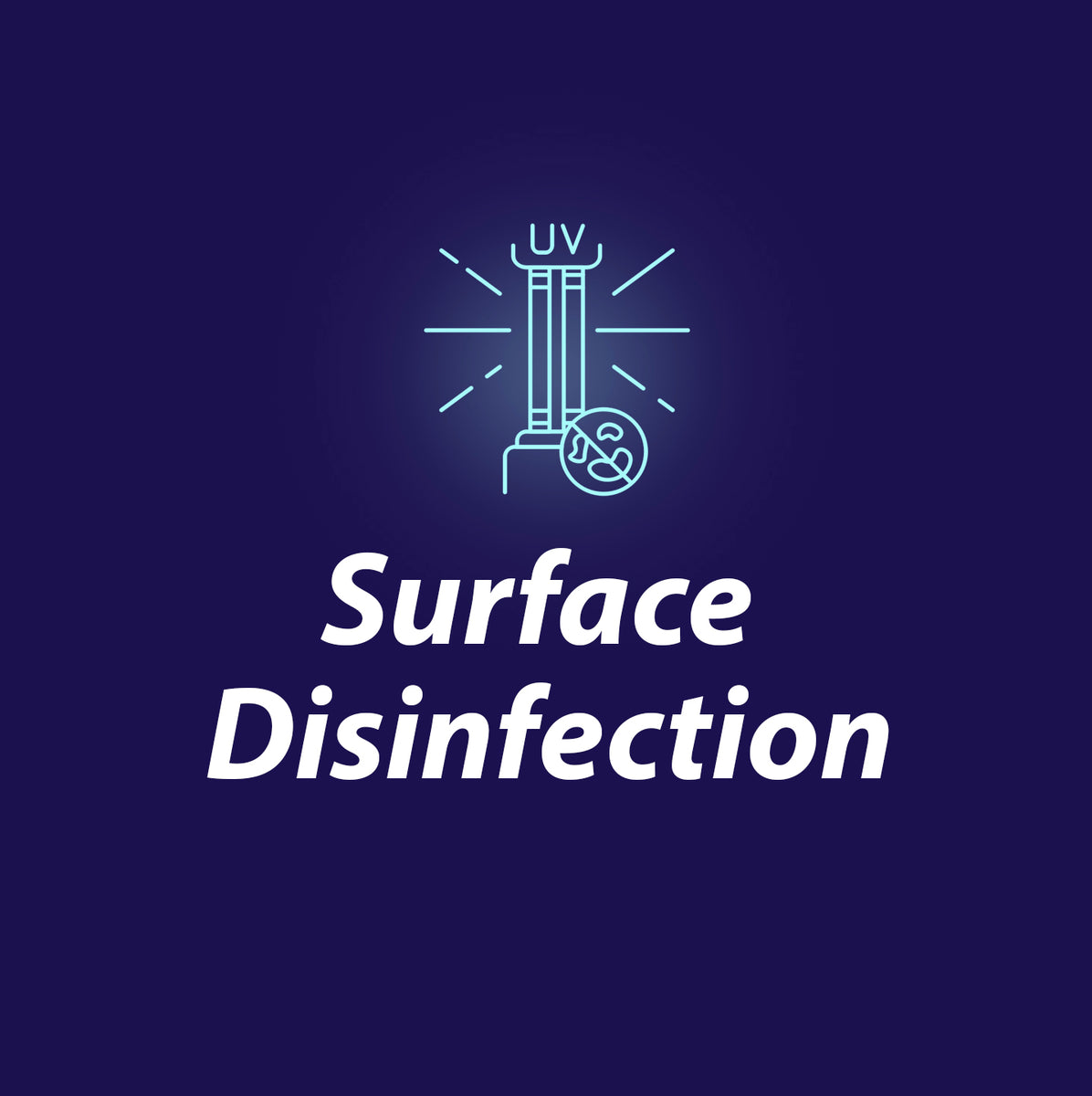UV Surface Disinfection Solutions: Enhancing Security and Hygiene in Any Setting
UV Surface Disinfection Solutions: Enhancing Security and Hygiene in Any Setting
Blog Article
Using the Potential of UV Sanitation: Safeguarding Health and Health
UV sanitation, an innovation widely used in numerous industries, has confirmed reliable in removing damaging microorganisms. From comprehending the mechanisms at play to implementing this technology in our daily lives, this conversation intends to shed light on the capacity of UV disinfection and its role in guarding our health and health.
Comprehending UV Disinfection
UV disinfection is an extremely efficient and extensively used method for guaranteeing and removing harmful virus health and wellness and health. This strategy utilizes ultraviolet (UV) light to suspend bacteria by harming their DNA and stopping them from duplicating. UV sanitation is particularly effective against microorganisms, viruses, and other bacteria that can cause infections and diseases.
The concept behind UV disinfection is easy yet effective. UV disinfection can be applied in numerous settings, consisting of water treatment plants, medical care facilities, food processing industries, and air filtration systems.
One of the benefits of UV disinfection is its capacity to successfully and efficiently eliminate a wide variety of pathogens without the need for chemicals or ingredients. Unlike various other sanitation approaches, such as chlorine or ozone, UV disinfection does not present damaging by-products or chemical residues into the setting. Additionally, UV disinfection is a non-contact process, which suggests that it does not call for physical contact with the microorganisms, minimizing the risk of cross-contamination.

The Science Behind UV Disinfection
The efficiency of UV disinfection hinges on its capacity to disrupt the genetic material of bacteria, rendering them not able to reproduce and thereby removing their hazardous possibility. UV, or ultraviolet, radiation is a type of electro-magnetic radiation with wavelengths shorter than noticeable light. It is classified into 3 types: UV-B, uv-c, and uv-. UV-C radiation, especially, has the fastest wavelength and the greatest power. Since it can pass through the cell wall surfaces of microorganisms and harm their DNA or RNA., this high-energy UV-C radiation is most efficient in sanitation applications.
When microbes are revealed to UV-C radiation, the power is soaked up by their genetic material, causing bonds to break and creating chemical responses that interrupt their capacity to reproduce. This stops the microorganisms from spreading and duplicating infection. UV disinfection is particularly effective versus microorganisms, fungis, and viruses, including usual pathogens such as Escherichia coli, Salmonella, and Flu.
The science behind UV disinfection is supported by considerable research and researches. It has been revealed that direct exposure to a sufficient dose of UV-C radiation can achieve a high level of sanitation, often going beyond 99.9% efficiency in eliminating microorganisms. However, it is very important to keep in mind that the performance of UV sanitation depends upon numerous factors, consisting of the strength of UV-C radiation, exposure time, range from the UV resource, and the vulnerability of the bacterium to UV radiation.
Applications of UV Sanitation
Offered the comprehensive research study and effectiveness of UV sanitation in interrupting the genetic material of microorganisms, it is very important to discover the various useful applications of this modern technology. UV disinfection has actually shown to be a beneficial tool in a large array of markets where maintaining a secure and tidy environment is important.
One major application of UV disinfection remains in health care settings. UV light can be used to decontaminate surfaces, devices, and even the air in hospitals and medical facilities. This aids to minimize the danger of healthcare-associated infections and guarantees a much safer atmosphere for individuals and healthcare workers.
Another crucial application is in the food and drink industry. UV disinfection is made use of to treat water and remove damaging microorganisms, such as E. coli and Salmonella, from the manufacturing process. uv surface disinfection. This ensures the security and quality of the items we consume
UV sanitation is also extensively made use of in water therapy plants and wastewater treatment facilities. It is an efficient approach for destroying damaging microorganisms, viruses, and parasites that can be present in water resources. This aids to provide clean and safe alcohol consumption water to communities and safeguard the environment from pollution.
In addition, UV disinfection is employed in the pharmaceutical industry to disinfect tools and preserve the stability of items. It is likewise made use of in research laboratories and research facilities to protect against contamination and guarantee precise results.
Advantages of UV Disinfection Innovation
One remarkable advantage of using UV disinfection innovation is its capability to properly eradicate bacteria without the use of rough chemicals. This is especially advantageous in numerous settings, such as medical care centers, water treatment plants, and food processing markets, where the visibility of unsafe virus presents a significant risk to public health and safety.
Unlike conventional disinfection approaches that rely on chemicals like chlorine or ozone, UV disinfection technology uses ultraviolet light to target and destroy the DNA of microorganisms, successfully neutralizing their capacity to recreate and create infections. This procedure not only gets rid of the need for potentially unsafe chemicals however additionally lowers the risk of chemical deposit or results staying in the treated setting.

Additionally, UV disinfection modern technology is environmentally friendly. As it does not depend on the use of chemicals, it eliminates the need for their transport, manufacturing, and disposal, lowering the total carbon impact related to disinfection processes. Additionally, UV sanitation systems have a longer lifespan compared to chemical-based methods, resulting in less regular replacement and more minimizing waste.
Carrying Out UV Disinfection in Life
To successfully apply UV sanitation in day-to-day live, organizations and individuals can incorporate portable UV disinfecting devices right into their hygiene regimens and cleaning methods. These devices are designed to send out ultraviolet light, which has been confirmed to kill or suspend a variety of microorganisms, including infections, microorganisms, and fungis. By making use of mobile UV disinfecting devices, people can decontaminate commonly touched objects and surfaces, such as cell phones, laptop computers, tricks, and doorknobs, decreasing the danger of spreading out bacteria and infections.
In enhancement to including mobile UV sanitizing tools, it is very important to comply with proper standards and referrals for reliable UV disinfection. This includes ensuring that the device is made use of correctly and for the advised period to attain ideal disinfection outcomes. It is also vital to prioritize safety see this here procedures, such as using protective eyewear and avoiding straight exposure of the UV light to the skin.

In addition, companies can carry out UV sanitation innovation in numerous setups to improve health methods. For example, hospitals and health care centers can use UV sanitation robotics to sanitize patient rooms, operating cinemas, and other high-touch areas. Food handling markets can integrate UV disinfection systems right into their assembly line to boost food safety and protect against contamination.
Conclusion
In final thought, UV original site disinfection modern technology holds excellent potential in securing wellness and hygiene. By taking advantage of the power of ultraviolet light, it effectively removes damaging bacteria and decreases the threat of infections. This technology can be used in various setups, such as health centers, water therapy facilities, and public areas, giving a reliable and secure approach of sanitation. With its numerous advantages, UV disinfection is a valuable tool for maintaining a clean and healthy and balanced atmosphere.
Unlike other sanitation methods, such as chlorine or ozone, UV sanitation does not introduce hazardous by-products or chemical deposits into the atmosphere. It is crucial to note that the performance of UV disinfection depends on different elements, consisting of the intensity of UV-C radiation, direct exposure time, distance from the UV source, and the vulnerability of the microorganism to UV radiation.
Another benefit of UV sanitation technology is its capacity to offer continual and quick disinfection. Unlike manual cleaning methods, which can be lengthy and require substantial labor, UV disinfection systems can be automated and operate continuously, ensuring constant disinfection without human intervention.To successfully execute UV disinfection in daily life, organizations and individuals can incorporate portable UV sanitizing devices right into their hygiene regimens and cleaning up practices.
Report this page